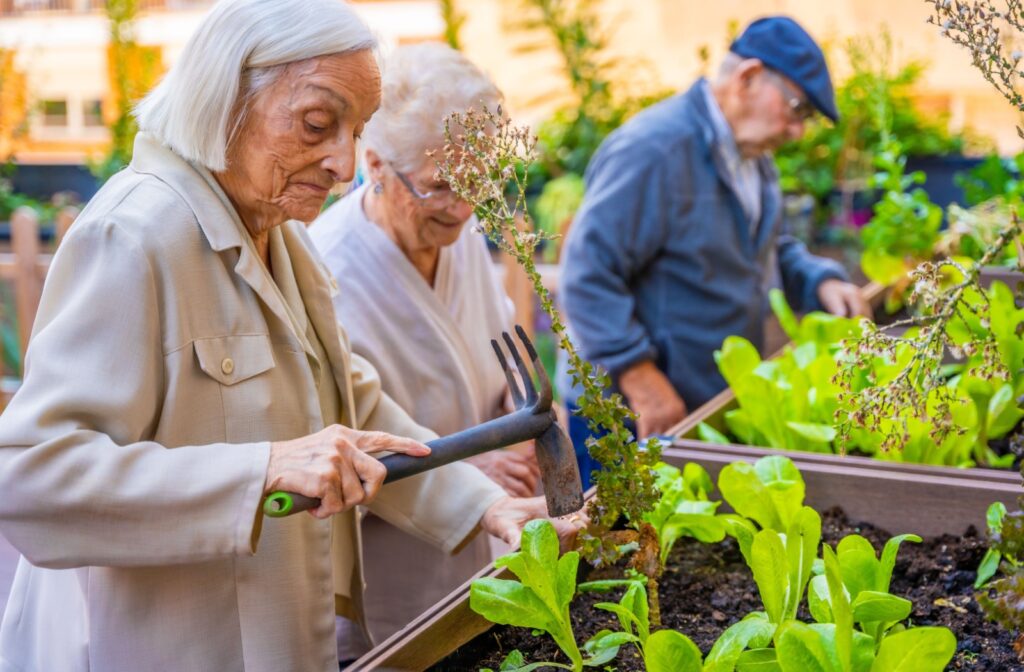Aging is a natural part of life that we all experience.. But have you ever wondered why some seniors seem to thrive emotionally and socially as they age, while others struggle with abrupt changes? The continuity theory of normal aging offers a fascinating perspective on the differences between these outcomes.
The theory suggests that maintaining familiar routines, relationships, and roles can help seniors adapt more successfully to the challenges of aging. That is, continuity can shape how seniors experience their later years and contribute to a higher quality of life.
At senior living communities like Parsons House Preston Hollow, where the focus is on preserving independence while providing the support needed, the application of continuity theory can make a meaningful difference in our residents’ happiness. When seniors are encouraged to stay connected to their familiar routines and values, their emotional and physical well-being benefit.
Exploring Continuity Theory in Aging
The continuity theory of aging, first introduced by sociologist Robert Atchley in the 1970s, focuses on the importance of maintaining consistency throughout life, even as we grow older. The theory explains that seniors strive to keep routines, values, and identity patterns intact, despite the inevitable changes brought by aging.
For instance, someone who was deeply involved in gardening during their younger years might continue to find joy and purpose in tending to plants in their later years. This continued engagement allows them to preserve a sense of identity and satisfaction, contributing to their wellness.
Key Principles of Continuity Theory
At its core, the continuity theory of aging is built around several guiding principles:
- Internal continuity: This involves consistency in personal traits, preferences, memories, and emotions. Internal continuity helps seniors keep a sense of who they are.
- External continuity: This refers to continuity in activities, relationships, and environments. For example, staying in one’s long-time home or regularly visiting familiar places creates external continuity.
- Adaptation through continuity: The theory emphasizes that continuity isn’t about resisting change, but rather involves integrating familiar patterns into new circumstances. It’s about adapting without losing a sense of self.
How Continuity Theory Applies to Seniors
For many seniors, aging can bring significant changes to physical health, mobility, and even social roles. The continuity theory of aging explains that holding onto familiar routines, hobbies, and relationships can make these transitions smoother. For example:
- An artist becomes a teacher: A senior who painted for decades but now struggles with arthritis might find fulfillment by teaching art classes instead. While their role shifts, their passion and identity as an artist remain.
- Staying connected through hobbies: A formerly avid tennis player might switch to a less physically demanding sport, like pickleball. They’re still active and engaged, keeping external continuity intact.
The Benefits of Continuity in Aging

The advantages of continuity go beyond keeping routines, touching nearly every aspect of well-being. Here’s how:
- Preserves identity: Continuity in activities and relationships helps seniors solidify their sense of self, creating confidence and reducing anxiety.
- Promotes emotional stability: Familiarity in routines provides comfort and reduces stress, especially when coping with major life changes, such as retirement or health challenges.
- Strengthens social bonds: Continuity in relationships ensures that seniors remain connected to the people they value most.
- Enhances quality of life: By focusing on enjoyable and meaningful activities, seniors are more likely to experience fulfillment and satisfaction.
How Continuity Theory Supports Well-Being in Seniors
The continuity theory of aging highlights how aging is about finding ways to carry what you love and who you are into the next chapter of life. By retaining a sense of familiarity, seniors often feel more secure and capable of navigating this stage of life confidently.
For families and caregivers, the theory reminds us to honor seniors’ preferences and past experiences, incorporating them into plans and activities whenever possible.
Applying Continuity Theory to Senior Care
For caregivers, families, and professionals working with seniors, the theory also offers important insights. Here are some practical ways to integrate its principles:
- Encourage familiar routines, such as daily walks or hobbies like knitting or reading.
- Personalize care by incorporating past interests or professions into activities.
- Enable social connections through calls, visits, or group activities with familiar faces.
- Create a living environment that reflects the senior’s personal history, such as displaying family photos or cherished décor.
Supporting Aging with Continuity in Mind
Aging doesn’t mean leaving behind who you’ve always been; rather, it means carrying those parts forward. The continuity theory of aging beautifully captures this idea, emphasizing the importance of upholding familiar patterns, relationships, and roles to help seniors age with confidence.
At Parsons House Preston Hollow, we understand the importance of honoring individuality and supporting continuity in the lives of our residents. Our community is designed to ensure seniors feel valued, comfortable, and connected to their personal history.
Visit us to see how we prioritize meaningful living and make every day special. Book a tour and discover how Parsons House Preston Hollow can be the perfect fit for your loved one.


